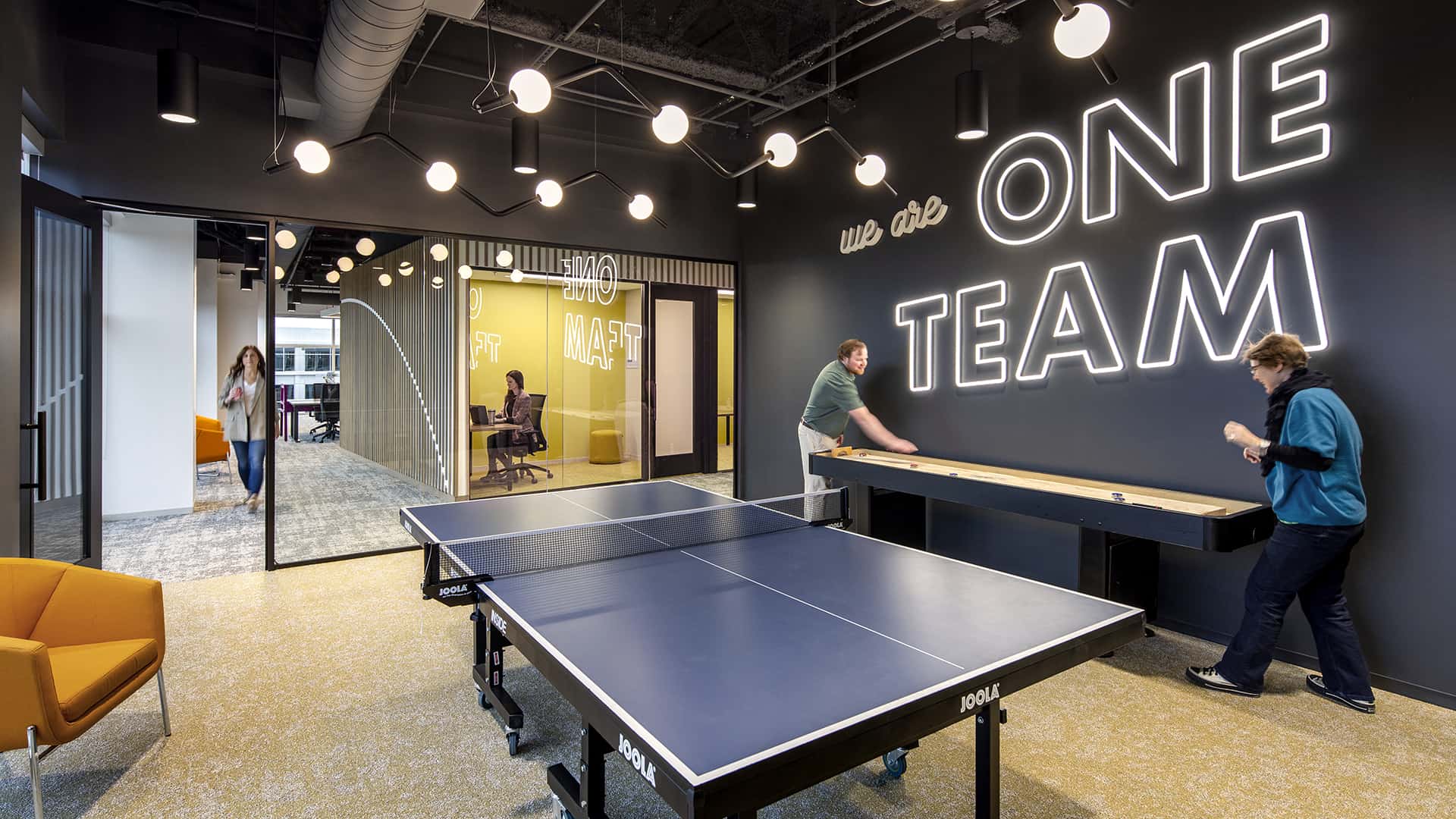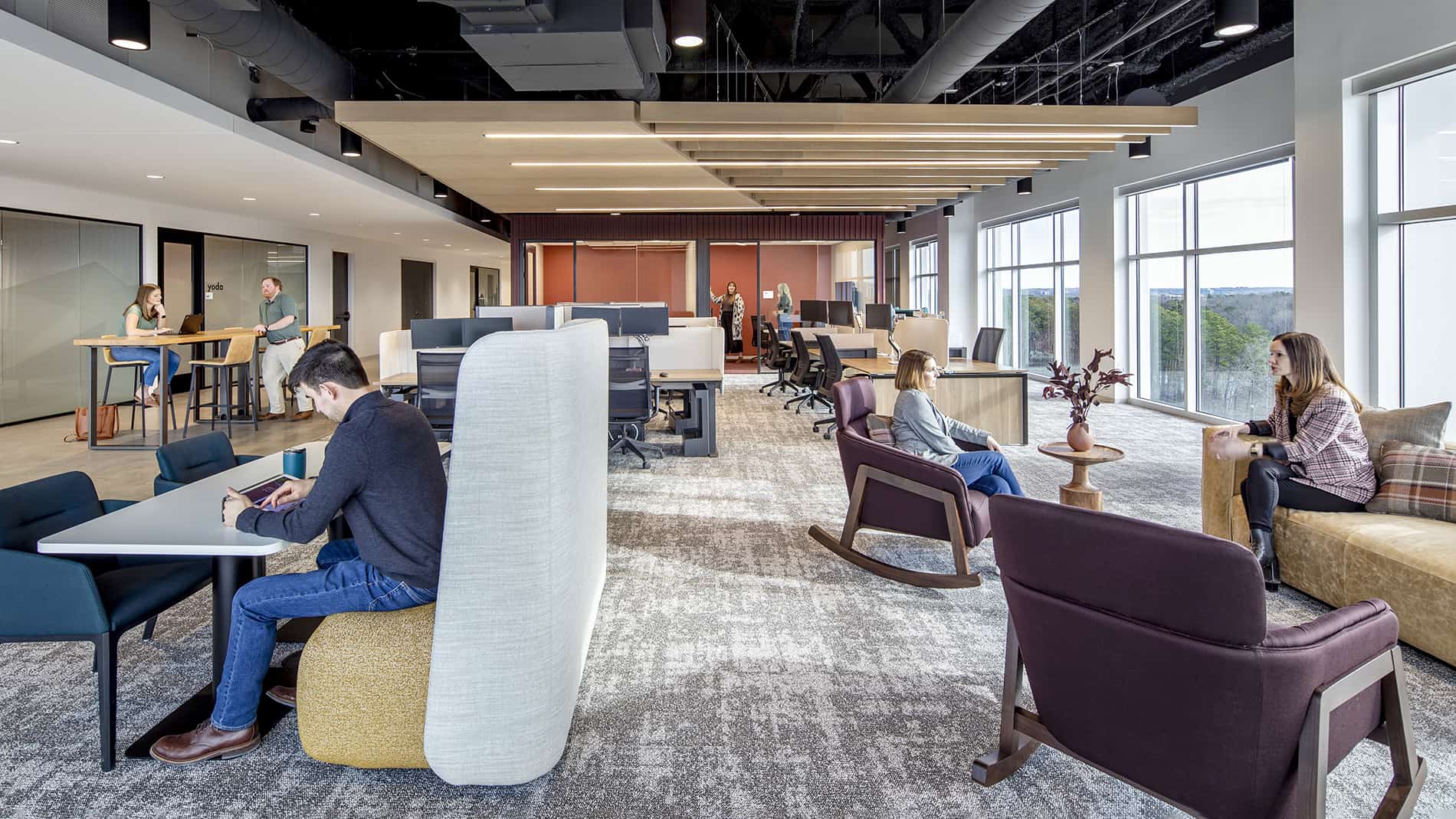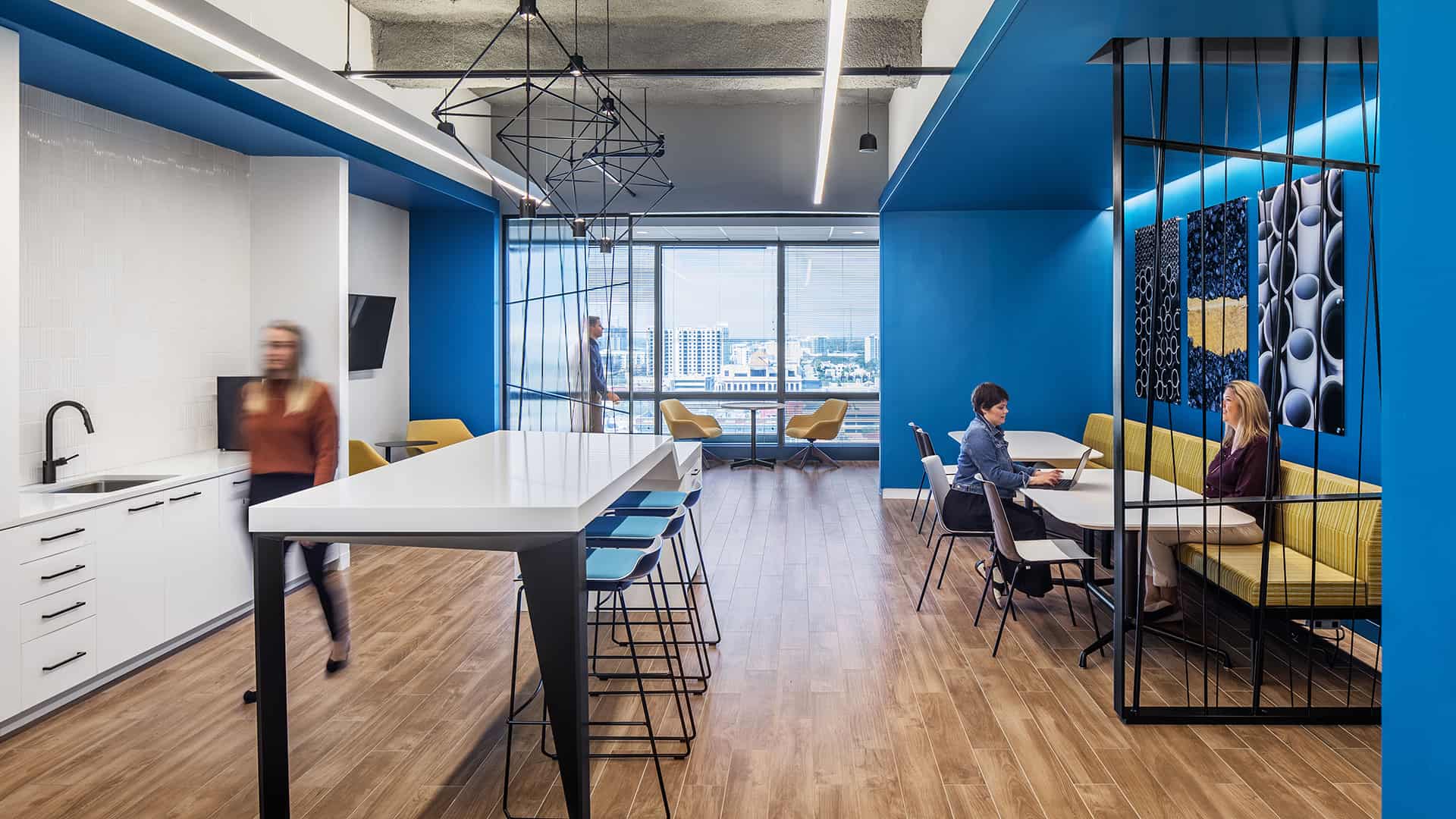The term “culture” is a bit like a chameleon, seamlessly taking on different shades and interpretations. Some distill culture to the daily choices made within a given environment over time. Miriam Webster defines culture as “the set of shared attitudes, values, goals, and practices that characterize an organization.” As an interior designer crafting experiences at the intersection of a company’s beliefs, behaviors, and the built environment, I like to think of culture as the organic growth of an organization’s soul.
People previously equated corporate culture with well-stocked kitchens, modern furnishings, and after-hour gatherings. However, the new, more flexible workplace presents a unique challenge. With employees working remotely, exclusively in the office, or in a hybrid model, organizations now face the task of nurturing their “soul” in both physical and virtual work environments. This shift brings new challenges, such as distance bias, unequal access to information, and reduced impromptu interactions that can lead to cultural inequalities among employees.
Cultivating a Thriving Workplace Culture
To cultivate a thriving workplace culture, it’s essential that employees feel valued and heard and that their well-being is prioritized. Sacha Connor, founder of Virtual Work Insider, advocates for building culture from a remote-first perspective, which includes technology that enables seamless collaboration and communication among remote employees, deepening day-to-day culture. It also means establishing consistent communication protocols that foster a sense of belonging and inclusion and evaluating work hours and locations to optimize personal strengths and enhance engagement.

Does remote-first mean no office space? Not necessarily. Several of our clients with remote workforces have requested a physical workplace supporting their organizational culture. The workplace, albeit less traditional, serves as a hub for monthly, all-hands meetings and offers exclusive amenities and support spaces. Channel Advisor, an e-commerce company, highlights this approach, having completed their workplace with a predominantly remote-first approach. Chief Integration Officer at Channel Advisor Rich Cornetta says, “Having a physical space doesn’t contradict our remote-first mindset; it actually strengthens our culture. Our office utilizes a neighborhood design concept—our library offers focus and solitude, and our garden area offers social collaboration. Our employees are thriving personally and professionally.”
While some organizations have fully embraced remote work policies, others, like Little, have welcomed their employees back into the office full-time. Carol Rickard-Brideau, CEO of Little, believes, “We do our best work in person. Being physically and mentally present fosters a culture of collaboration and performance that sets us apart.”
How Office Environments Promote an Equitable Culture
Recognizing that space plays a vital role in nurturing culture, many organizations are reassessing their office environments. The spaces most successful in attracting employees back into the office full-time include a variety of work modes for focus, collaboration, video-conferencing, and social gathering, along with amenities that provide the same convenience and comfort as home. Outdoor work environments, for example, are a great option—if the climate allows—as fresh air and natural light are critical to a productive day. Concierge experiences, such as dry cleaning and meal offerings, also make life easier for employees outside work hours.
Studies have shown that the hybrid workplace can be the most challenging when attempting to maintain a strong organizational culture. This hybrid approach requires thoughtful attention to in-office culture, distributed culture, and a balanced combination of the two.

Like remote workforces, technology infrastructure is critical in a hybrid organization’s culture by ensuring seamless virtual collaboration and video conferencing between in-office and remote employees. In addition, organizations can nurture a meaningful culture through customized, activity-based spaces. Creating a workspace that accommodates activities like brainstorming, focused work, and socializing, along with shared desk policies, promotes fairness and equal access to resources for hybrid workers.
“With hybrid working, our company focuses on ensuring that our corporate culture endures and that new hires are welcomed, integrated, and supported,” says a real estate representative of one of Little’s Durham clients. “The office now plays a huge role in attracting teammates—they must want to come in. Folks ask themselves, ‘Why come in if I won’t see anyone?’ Therefore, we have emphasized collaboration and spaces for impromptu gatherings.”
In Conclusion
Whether your employees work remotely, in the office, or a combination of both, intentional recognition, connection, and equal opportunities are essential for aligning them with your culture. So, how can you determine if you’ve established a resilient and equitable culture you can be proud of? Engage with and listen to your employees. If employees feel inspired to believe in and defend your company—regardless of where they sit—they’ll feed your organization’s “soul” for years to come.
Learn more about the working world and how its culture is being redefined. Little’s recently published Beyond Workplace III book explores the possibilities, the realities, and even the impossible.

